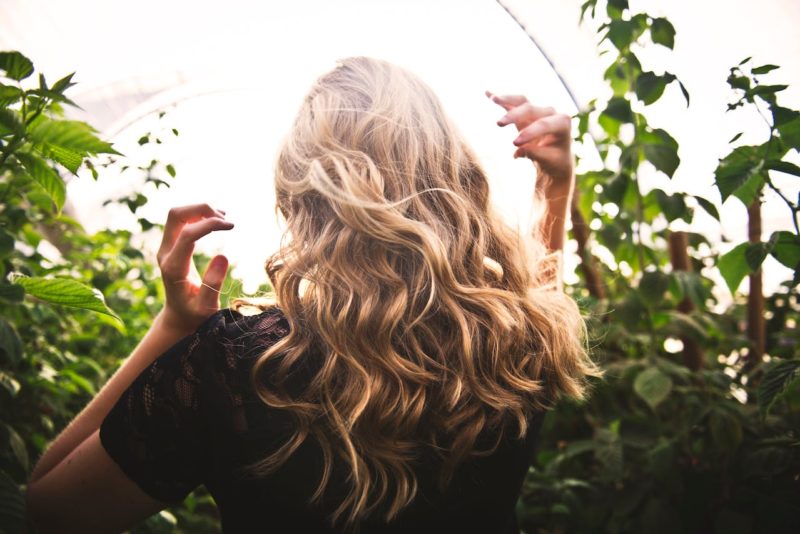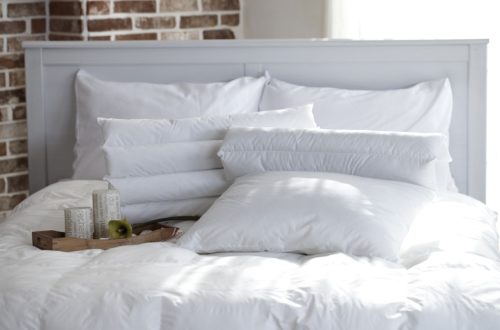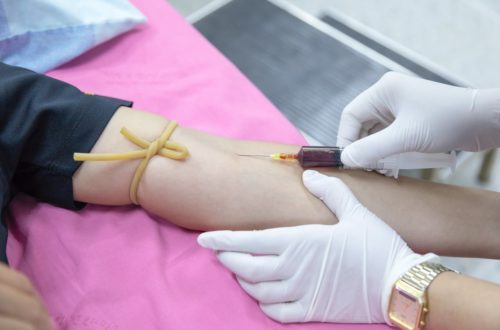How to Maintain Healthy Hair (In 15 Easy Tips)

Having healthy-looking hair significantly contributes to your overall appearance and well-being. Prioritizing healthy hair is more than just about aesthetics; it’s about ensuring less hair fall and breakages.
However, achieving and maintaining healthy hair isn’t straightforward. It’s not solely reliant on using high-quality shampoo; it involves consistent care and treatments. Your hair’s inherent texture and type play a crucial role. Some individuals contend with naturally drier hair, necessitating extra care and hydration.
Irrespective of your hair’s characteristics, this concise guide presents essential tips to effortlessly maintain healthy hair.
1. Cut Your Hair Regularly
Frequent haircuts play a pivotal role in maintaining healthy hair. As your hair grows, the ends can become dry and prone to splitting. Regular trims are essential to eliminate these damaged ends. While some may hesitate, fearing it will impede hair growth, a small trim every six to eight weeks promotes healthier growth by preventing split ends. Visiting the salon for a quick trim helps ensure your hair stays vibrant and robust in the long run.
2. Let Your Hair Rest
Amidst our daily routines, our hair faces extensive product use and styling, which can detrimentally impact its health. Incorporating designated rest days, such as weekends, allows your hair to recuperate. Opt for a natural approach during this time, steering clear of products and heat styling tools. Let your hair air dry naturally and avoid tying it tightly, as constant pressure can lead to damage. Allowing your hair these breaks promotes its overall health and resilience.
3. Scalp Health Matters Too
The health of your scalp is paramount for maintaining healthy hair. Often overlooked, product buildup can occur, causing itchiness or dryness. Recognizing signs of buildup is crucial; a deep cleanse using detoxifying products or consulting a hairstylist might be necessary for scalp health. Attending to your scalp ensures a strong foundation for healthy hair growth and vitality.
4. Eat Healthily
A balanced diet directly impacts hair health. Your hair is primarily composed of protein derived from your diet. Insufficient protein intake diverts nutrients away from your hair follicles to vital organs, affecting hair quality. Additionally, adequate iron intake is essential; a deficiency in iron among women has been linked to hair loss. Ensuring a nourishing, well-rounded diet supports vibrant and healthy hair growth.
5. Protect Your Hair From Hot Tools
Heat styling, whether through curling, straightening, or blow-drying, poses risks to your hair’s health. Even blow-drying on high heat can cause damage. Opt for air-drying whenever possible. If heat styling is necessary, use lower heat settings and apply a heat protectant to minimize harm. Consistent care in this regard prevents unnecessary damage and promotes healthier, resilient hair.
6. Deep Conditioning is Crucial
Similar to our skin, our hair craves hydration. Implementing a consistent deep conditioning routine, preferably weekly, is pivotal in replenishing and maintaining optimal moisture levels. This practice revitalizes hair that might be suffering from dryness due to environmental factors, heat styling, or chemical treatments.
Deep conditioning serves as a restorative therapy, infusing essential moisture and nourishment into your strands. It helps repair damage, smoothens rough cuticles, and enhances the overall texture and shine of your hair.
7. Protect Your Hair From The Sun
Extended exposure to the sun can wreak havoc on your hair, leading to dryness, brittleness, and frizz. Shielding your hair from harmful UV rays is crucial for maintaining its health. Wearing a hat or scarf when outdoors helps minimize sun damage, preserving your hair’s natural moisture and preventing scalp discomfort from sunburns.
8. Hot Water Is Bad For Your Hair!
While a hot shower might be comforting, it’s not ideal for your hair’s health. Hot water can strip your hair of its natural oils, leading to dryness and potential damage, especially for color-treated hair. To maintain healthy hair, consider using lukewarm water when washing. Lukewarm water helps retain your hair’s natural moisture without causing excessive dryness or color fading. Balancing comfort with hair health, this simple adjustment in water temperature supports vibrant, well-nourished hair.
9. Don’t Brush Your Hair Too Much
Contrary to the old belief of vigorous hair brushing, less is more when it comes to maintaining healthy hair. Excessive brushing can strain and weaken your hair, making it more prone to breakage. While brushing is essential for untangling and styling, a gentle approach is key. Use a wide-tooth comb or a brush designed for your hair type, starting from the ends and gradually working your way up to prevent unnecessary strain. Strike a balance between care and styling to keep your hair healthy and resilient.
10. Use a Silk or Satin Pillowcase
Upgrading your pillowcases to silk or satin might seem like a luxurious choice, but it offers significant benefits for your hair. Unlike cotton, which can cause friction and tugging as you sleep, silk or satin provides a smooth surface for your hair to glide over. This reduces the risk of breakage, split ends, and frizz, as your hair isn’t subjected to the roughness that cotton pillowcases can create. Additionally, these softer materials help retain your hair’s natural oils and prevent them from being absorbed, leaving your hair more hydrated and less prone to damage.
11. Regularly Clean Hair Tools
Hair tools gather product buildup and oils over time. Remove hair strands, then clean brushes and combs by soaking them in soapy water and scrubbing gently. For styling tools, wipe the surfaces with a damp cloth and mild soap. Regular cleaning, every few weeks, ensures your tools don’t transfer dirt and residues back to your clean hair, maintaining its health and cleanliness.
12. Limit Chemical Treatments
Limit frequent chemical treatments like coloring or perming, as they can weaken hair over time. Consider less damaging alternatives or styles that require fewer interventions. Opt for gentler formulations and consult with a hairstylist to maintain your hair’s strength and health while achieving your desired look.
13. Stay Hydrated
Staying hydrated is crucial for healthy hair. Water aids in transporting essential nutrients to the scalp and hair follicles, maintaining moisture balance. Dehydration can lead to brittle hair prone to breakage. Ensure adequate water intake and consume water-rich foods for stronger, more resilient hair. Prioritize hydration for healthy hair and overall well-being.
14. Avoid Tight Hairstyles
Tight hairstyles, like high ponytails or braids, can strain hair, leading to breakage and potential hair loss. Opt for looser styles to reduce tension on hair follicles, preventing breakage and promoting healthier hair growth. Giving your hair breaks from tight styles helps maintain its strength and vitality.
15. Protect Hair in Chlorinated or Saltwater
Chlorine in pools and salt in seawater can strip hair of its natural oils, leaving it dry, brittle, and prone to damage. Before swimming, dampen your hair with fresh water or apply a leave-in conditioner to create a protective barrier. This barrier helps minimize the absorption of chlorinated or saltwater, reducing the potential damage to your hair.
After swimming, rinse your hair with fresh water to remove chlorine or salt residue. Follow up with a gentle shampoo and conditioner to replenish moisture and nourish your hair. Additionally, consider wearing a swim cap to shield your hair from direct contact with chlorinated water or saltwater, further minimizing exposure and preserving your hair’s health.
Conclusion
Maintaining healthy hair requires a blend of mindful practices—from regular trims and protective measures like avoiding tight hairstyles to simple adjustments like using silk pillowcases and clean hair tools. Prioritizing hydration, both internally through adequate water intake and externally by protecting hair from harsh elements, fosters hair resilience and vitality. By integrating these practices into your routine, you’ll effortlessly maintain healthy hair, ensuring its strength and vibrancy for the long haul.
Would you like to receive similar articles by email?





